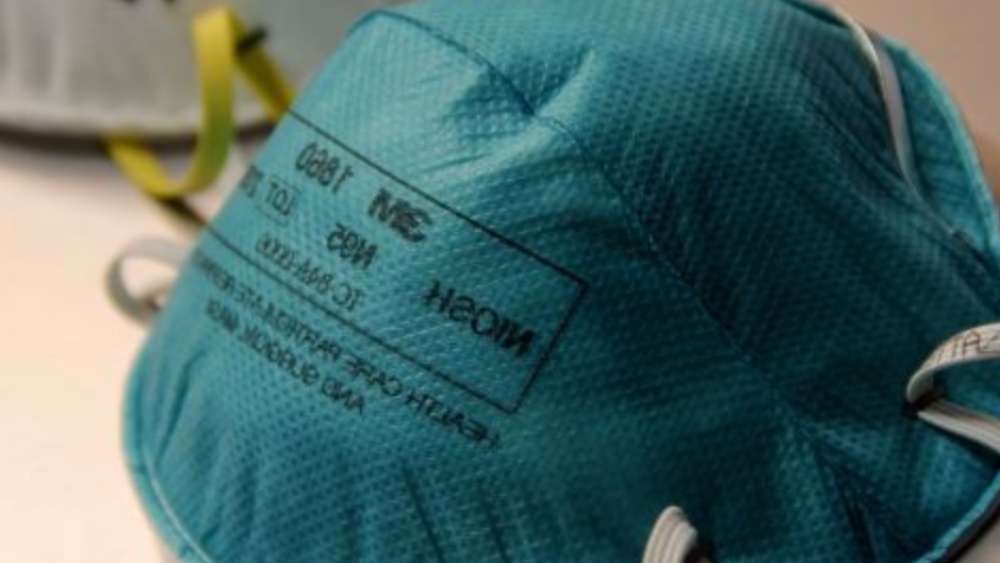We are hearing from hospital and EMS services in all parts of the country that running out of N95 respirator masks during the COVID-19 pandemic is their biggest concern. An EMS1 poll asking providers about their biggest COVID-19 EMS-related concern showed that 31% of respondents are worried about running out of supplies. This is well above concerns about staffing, quarantine or becoming infected.
It makes sense, EMS providers are on the frontlines and have significant chances of being exposed. We know that being exposed increases the risk of transmitting the virus to others and of taking us out of service when our communities need us most.
It is important to take precautions and wear personal protective equipment (PPE) as recommended by the Centers for Disease Control and Prevention and your agency’s procedures. Unfortunately, many of our agencies are understocked with some of the critical pieces of PPE such as N95 respirators and the supply lines to get deliveries of them now have slowed down if not dried up completely.
The CDC has a broad category of recommendations for optimizing the supply of N95 respirators. These include strategies for minimizing the number of providers that may be exposed to a patient, ventilation of treatment areas, substitute PPE, etc.
The good news is that the CDC has posted National Institute for Occupational Safety and Health (NIOSH) guidelines for extended use and limited reuse of N95 masks. Simply put, providers do not always need to dispose of their mask between each call. Extended use refers to the “practice of wearing the same N95 respirator for repeated close contact encounters with several patients, without removing the respirator between patient encounters.”
EMS is more likely to fit in the limited re-use category where a provider uses the same mask for multiple patient encounters but takes it off between uses. As the CDC website points out, many other industries have employees wearing N95 and other high-filtration masks for extended periods without difficulty. The masks continue to function well. EMS can do this as well, with the appropriate precautions.
Limited re-use of an N95 respirator
The CDC/NIOSH guidelines state that, if in short supply, N95 respirators may be re-used for a limited number of times by the same EMS provider when contact transmission is not a concern if:
- The unit maintains its structural and functional integrity
- The respirator is not soiled with blood, respiratory or nasal secretions, or other bodily fluids from patients
- The provider did not use the N95 during aerosol-generating procedures
The recommendations go on to point out that the mask must be donned and doffed correctly, and cared for properly between uses. Providers should perform proper hand hygiene before and after touching their N95 and use a clean pair of exam gloves when putting the N95 back on. Avoid touching the inside of the respirator.
Between uses, the respirator should either be hung in a designated storage area or placed in a clean, breathable container, such as a paper bag. Do not keep a used N95 mask in a sealed plastic bag or stuff it in a pocket.
In the absence of any re-use recommendations from the respirator manufacturer, the CDC says that its data suggests that masks should be used for no more than 5 applications before being disposed of.
Use of expired N95 respirators
The contingency capacity strategies posted by the CDC also address the use of N95 respirators that are beyond the manufacturer-designated shelf life. If the respirators are structurally intact, they may be considered for use. The elastic straps and the nose bridge material are the areas that commonly break down as the unit ages.
Check to confirm that the N95 will fit to the user properly and form a tight seal. Consider performing standard fit-testing with the units.
Follow agency employee health policies
Be sure to check with your service’s policies and employee health personnel before re-using any PPE or using any products that are expired. As part of their overall infection control programs, agencies should have policies in place to inspect PPE and describe how each piece is used.
Read next: CDC updates EMS, 911 guidance for COVID-19



